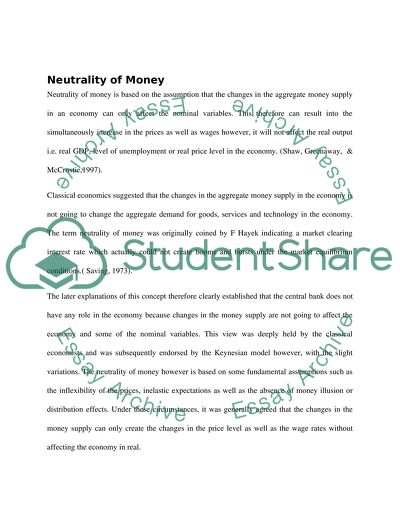Cite this document
(“Neutrality of Money Essay Example | Topics and Well Written Essays - 2000 words”, n.d.)
Retrieved from https://studentshare.org/environmental-studies/1407658-a-central-issue-in-monetary-economics-is-whether
Retrieved from https://studentshare.org/environmental-studies/1407658-a-central-issue-in-monetary-economics-is-whether
(Neutrality of Money Essay Example | Topics and Well Written Essays - 2000 Words)
https://studentshare.org/environmental-studies/1407658-a-central-issue-in-monetary-economics-is-whether.
https://studentshare.org/environmental-studies/1407658-a-central-issue-in-monetary-economics-is-whether.
“Neutrality of Money Essay Example | Topics and Well Written Essays - 2000 Words”, n.d. https://studentshare.org/environmental-studies/1407658-a-central-issue-in-monetary-economics-is-whether.


